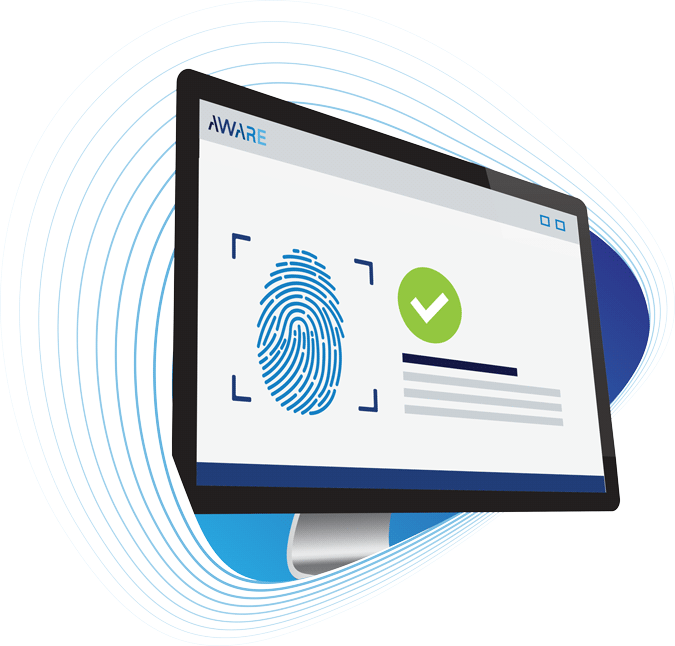Today‘s biometric identification systems in law enforcement rely on advanced matching algorithms that can compare latent biometric samples to digital templates in a gallery. The amount of fingerprint data has increased significantly since the FBI created IAFIS in 1999, which allowed law enforcement agencies from all over the country and the world to store, exchange, and compare fingerprint data in a digital format. Since then, additional biometric identification modalities (such as face and iris recognition) have been incorporated into the systems. This multimodal search system is called Automated Biometric Identification System (ABIS). Like AFIS and IAFIS before it, biometrics algorithms underpin ABIS’s functionality and performance. This provides an immediate opportunity in law enforcement.
Enrollment
In an ABIS, algorithms leverage a broad assortment of techniques to perform a one-to-many biometric search. The accuracy of these algorithms is greatly influenced by biometric enrollment —the capture of high-quality images that make suitable biometric records or templates. During this process, software validates quality standards conformance of the image and extracts the specific features that will be compared during a search.
In facial recognition, for example, real-time analysis can tell an operator capturing a mug shot if the image is sufficient as a template, and automatically flag faults that could affect matching performance. The algorithms can also identify errors such as someone presenting the wrong hand while enrolling tenprints on a live-scan system (representing right as left or vice versa).
Data from a fingerprint, face, iris, or even voice is transformed into digital information through this enrollment process. If sample quality suffers during enrollment, it may compromise the integrity of the template, and ultimately the performance of a search.
In many law enforcement applications, biometric enrollment usually takes place during a booking. Once captured, raw images are archived so they can be used to create new templates in case template generation and matching algorithms are updated in the future. In some cases, such as use of biometrics sourced from latent fingerprints or surveillance video, law enforcement professionals cannot control the image quality of the sample. In this case, forensic analysis tools are used to aid the examiner in their search.
Searching and matching
When it comes time for the actual search, algorithms first classify an image by its quality level, then detect useful features in the sample among the templates in the database. The exact function of those algorithms varies according to the modality (face, fingerprint, voice, etc.). For example, algorithms attempting to find a match in a database for a fingerprint sample might compare minutiae like ridge endings and bifurcations.
The goal in using biometric search in law enforcement is to identify the individual bound to the fingerprint or face in the system. For every record in a gallery, a match score assesses the likelihood that the probe and gallery samples come from the same individual.
In theory, access to more biometric records means a greater pool of individuals to compare a sample against. Since a biometric search is limited to individuals who have been previously enrolled into a system, the ability to search more systems means the ability to search more individuals.
Government agencies around the world have launched biometric data-sharing efforts. Interpol manages an international database containing nearly 200,000 fingerprint records and almost 11,000 latent fingerprints. Authorized users in member countries can submit fingerprint data to search for matching records.
However, access to more biometric records also means more potential false-match errors. Amassing more records means that an algorithmic error or shortcoming could lead to a statistically greater number of false matches or non-matches.
More than one modality
Using a combination of multiple modalities (fingerprint, face, iris) significantly improves matching performance. Multimodal biometrics increase the amount of data that is analyzed, which helps biometric matching engines make more accurate comparisons between a live sample and enrolled templates. Simply put, the probability of a false match or non-match when both a face and a fingerprint are used as search criteria is much lower than by itself.
In situations where multimodal search is impractical, the use of multiple, complementary algorithms may provide a path to improving unimodal search performance.
Flexible Architecture
Algorithms from different vendors have evolved over the last 20-plus years, often drawing on public-domain research; but they are designed in isolation, targeting different applications and most importantly, trained and tested on different datasets.
So how can algorithms from different suppliers be used together in the same system? At a minimum, there must be architecture in place that is open and flexible. This means:
- enrollment hardware and software that is not tied to any matching algorithm or supplier,
- middleware that can integrate matchers from different suppliers, and
- dynamic matching workflow logic that can tune a biometric search for different situations.
AwareABIS™ is well-suited for this type of biometric fusion: its Biometric Services Platform (BioSP™) is an algorithm-agnostic middleware platform., and Astra™ is a highly scalable biometric matching platform that can deploy Aware’s Nexa™face biometric algorithms, but also algorithms from other suppliers.
Law enforcement is an especially compelling use case for biometric fusion, mainly because of the scale of one-to-many searches taking place in criminal databases every day. As law enforcement agencies’ biometric systems evolve and databases grow, expect to see more intramodal fusion of algorithms—even from different vendors—in biometric search.
Learn More
For more details on this topic, check out this article, which expands on the points presented here and includes some more examples. To learn more about AwareABIS and the AwareABIS family of products, visit the offering’s webpage and request a demo. Or, as always, go ahead and us the live chat function to the right and let us know how we can help you.
